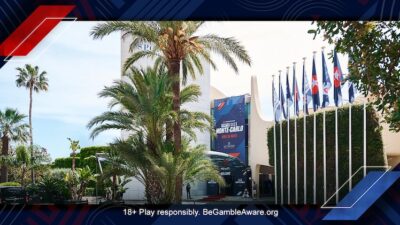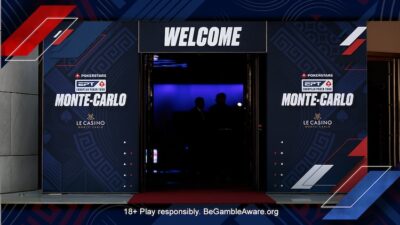

When players sit down at the start of the World Series of Poker Main Event, they’ll tell you, with a surprisingly genuine tone, that they’re here to win it. Fair enough. Who wouldn’t want to be World Champion.
The thing is, when they actually start playing, and particularly as the money bubble approaches, it’s clear that most targets are not quite so lofty. Just cashing in the Main Event is a huge achievement. The goal seems to be to navigate the bubble, surrender the short stack, and then roll around in joy on a beautiful min-cash.
Ah, the min-cash. Let’s take a moment to appreciate it. The min-cash is arguably the commodity most secretly sought after, yet cruelly derided. Min-cashes have been fuelling Vegas benders since time began. They keep bankrolls from going extinct. The min-cash earns you a flag on your Hendon Mob, allows you to tell your friends you made money at the World Series, and likely brings you back for another crack next time.
No matter that the bubble boy or girl also tends to get his or her buy-in covered for a second crack of the whip. The min-casher can stick the money away for the year and maybe have a steak dinner on the interest.
In common with everything else at the WSOP, the min-cash has developed over the years. From 1970-1977, the min-cash didn’t even exist. For the first seven years of the WSOP, the Main Event was a winner-take-all affair, meaning the player losing heads-up won nothing.
After that, from 1978-80, all of the top five earned a payout of some description. The first player ever to bubble the Main Event was the the former chess master and poker player Ken Smith, while the first player ever to pick up a min-cash was the Texas rounder Jesse Alto.
Alto is the spiritual deity of the min-casher. He blazed a trail. While Bobby Baldwin, Crandell Addington, Louis Hunsucker and Buck Buchanan troubled themselves with divvying up the lion’s share of the prize pool in 1978, Alto had locked up his $21,000 for fifth (that’s around $79,000 in today’s money, adjusted for inflation). Alto was the first “minnest-casher”, the name I’m attaching for the first time to the very first player out in the money.
The min-cash has seen its down times too. Even as the field size in the Main Event started to swell, and thus a greater number of players were paid and the minnest-casher drifted further away from the champion, the value of the min-cash at times went into a depression.
For instance, from 1986 to 1992, the min-cash was less than the $10,000 buy-in. It meant that such luminaries as the aforementioned Addington, who is a WSOP Hall of Famer but was 1989’s minnest-casher, picked up only $7,500 for a net loss of $2,500. This period also witnessed its first minnest-cashers from overseas. Costa Rica’s Jose Rosenkranz “won” $7,500 in 1987 and Sweden’s Stefan Dios took the same a year later.
It was a far cry from 1985, when John Fallon’s minnest-cash was worth $28,000. The min-cash has never been higher.
For most of the 1990s and into the 21st century, the WSOP min-cash hovered between $15,000 and $20,000, with a couple of deviations either way. In 2004, for instance, Dave Combs finished in 225th place and earned the year’s minnest-cash. It earned him precisely his money back.
Since 2015, the WSOP min-cash has been a steady $15,000. The player who gets knocked out immediately after the bubble this year will earn fifteen grand, but more players than ever before will get a payout of some description. The huge field, coupled with the relatively recent decision to pay 15 percent of the 7,221 starters, means that the 2017’s minnest-casher will be in 1,084th place.
Other min-cash trivia:
In 2012, the first min-cash was split four ways after Steve Rosen, Dane Lomas, Desmond Portano, David Kelley were all eliminated on the same hand of hand-for-hand play, bursting the bubble at the same time. They split the $19,227 min-cash four ways. The same thing happened in 2014, when Cai Zhen, John Dwyer and Kori Hunter split the first min-cash. The quartet in 2012 set a new low for the min-cash at $4,806.
Minnest-cashing is truly America’s game. Only four overseas players have ever picked up the minnest-cash: Jose Rosencranz (Costa Rica, 1987), Stefan Dios (Sweden, 1988), Donnacha O’Dea (Ireland, 1997), George McKeever (Ireland, 1997)
There was a minnest-casher from overseas before the first overseas Main Event champion.
Three World Series of Poker Hall of Famers have picked up a minnest-cash: Johnny Moss (1979), Sailor Roberts (1982) and Crandall Addington (1989)
Farzad Bonyadi, the minnest-casher in 1998, has three World Series bracelets and more than $4 million in live tournament winnings.
WSOP photos by PokerPhotoArchive.com.
Back to Top








